According to legend, the hardy, unpretentious and alluringly modest heather ordinary with all these qualities was endowed by the Creator for agreeing to grow on the hills and mountain slopes blown and blown by the winds. Amazing and fragrant perennial shrub is the only representative of the genus Heather.
Material Content:
Culture Description

Heather is represented by creeping bushes from 30 to 70 cm high, consisting of shoots covered with trihedral leaves and one-sided racemose inflorescences of lilac color. Miniature bell-shaped flowers fascinate with their beauty from the middle of summer until the onset of severe colds, keeping them dried up on the shoots even after snow falls. In nature, wild plants are found in different parts of the planet from North Africa to Greenland.
Choosing a place and seedlings for planting

Due to its endurance, heather feels excellent on acidic and poor soils, which are not very suitable for other plants. At the same time, the shrub does not tolerate alkali and moisture stagnation in the soil. In its natural habitat, heather prefers to grow in sunny areas, but can tolerate partial shade. In order to create growths close to the natural conditions in the garden, it is necessary to prepare an acidic substrate consisting of peat, coniferous land, sawdust and sand taken in a ratio of 3: 1: 1, and replace it with a layer of garden soil in the selected area.
When choosing heather seedlings, you need to pay attention to:
- place of purchase - it is better to make a similar purchase at specialized points of sale, including trusted nurseries;
- age - preference should be given to two-year-old seedlings with developed shoots;
- state of the root system - planting material with a closed root system preserves the symbiosis of roots with mushrooms, which allows heather to grow on poor soils;
- variety - depending on the planned planting location and future composition, the flower grower will be able to choose the right planting material.
Planting heather in the open ground
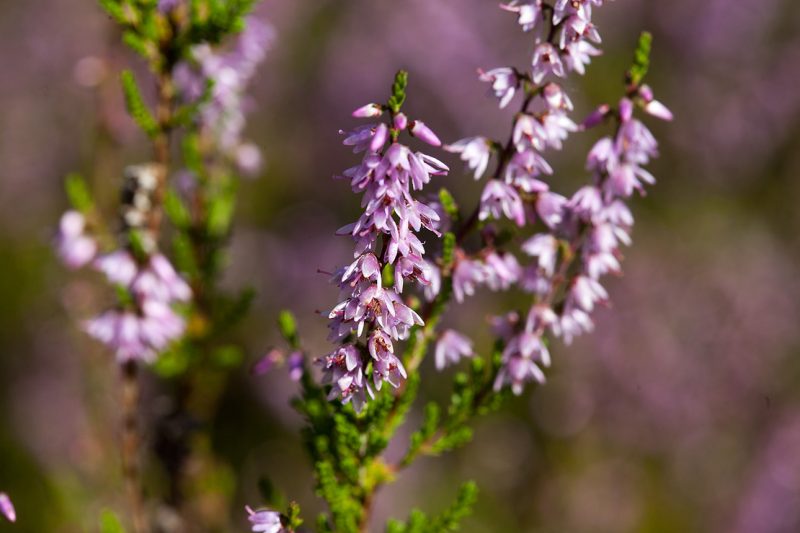
Planting heather in the garden can be carried out both in autumn and in spring, which is more preferable for areas with harsh climates.
How to plant?
Plant seedlings in open ground as follows:
- In the prepared area, holes are dug 30 cm deep in the amount of 6-10 pieces per 1 m2, depending on the size of the variety.
- If the soil is dense, then drainage is placed at the bottom to prevent moisture stagnation in the roots.
- Then a sapling is dropped, which is sprinkled with soil with the addition of a small amount of azofoska so that the root neck is flush with the soil.
- The trunk circle is well moistened and mulched with peat or slivers from conifers.
Important Care Tips
Unpretentious evergreen plant for lush flowering requires the observance of certain agricultural care measures.
Watering

Due to the superficial root system, heather with a deficit of natural moisture requires systematic irrigation with acidified water. The soil should be maintained in a slightly moistened state constantly. During periods of drought, so that the bush does not suffer from hot air currents, it is necessary to sprinkle every evening.
Loosening, weeding and mulching
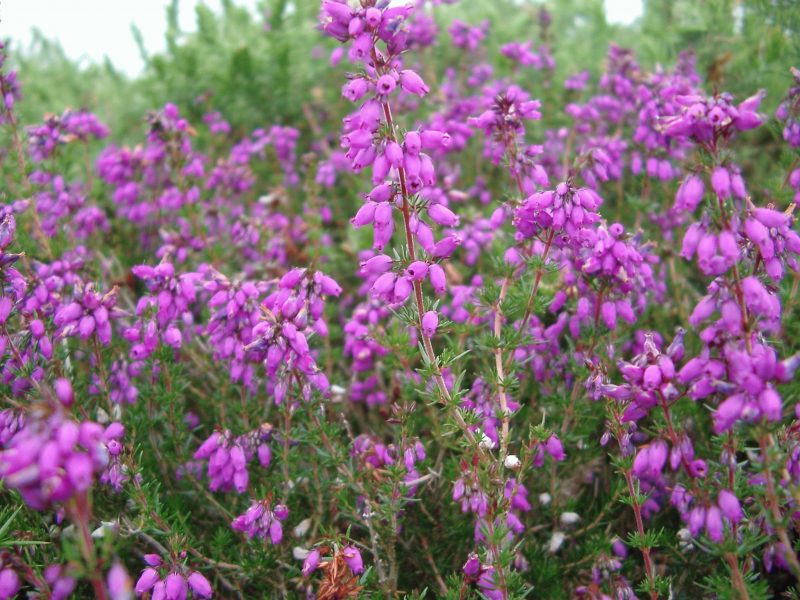
To prevent the rapid evaporation of moisture and protect the roots of plants from the summer heat, the beds are mulched. After watering and precipitation, it is recommended to loosen the soil to a depth of 10 cm above the mulch. Simultaneously with loosening, weed vegetation is removed.
Top dressing
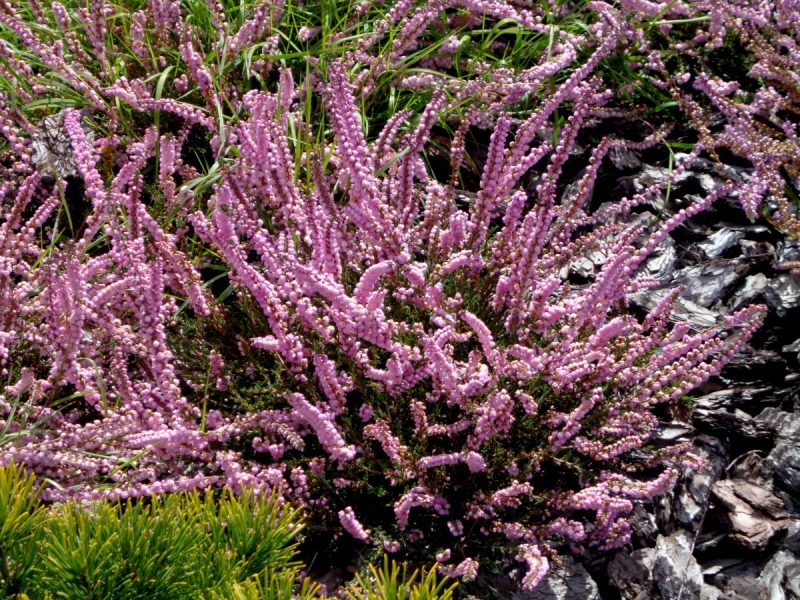
Evergreen bushes are fed every spring with the help of granular mineral complexes at the rate of 20 g nitroammophoski per 1 m2. Dry fertilizers scatter in near-stem circles, close up with mulch and dissolve by abundant watering.
Pruning
To maintain the decorative colors at the proper level, it is necessary to trim each spring. Intensively shorten the shoots by ⅔ or even ½ length is possible only from 3 years of mouth in a permanent habitat.
Transfer
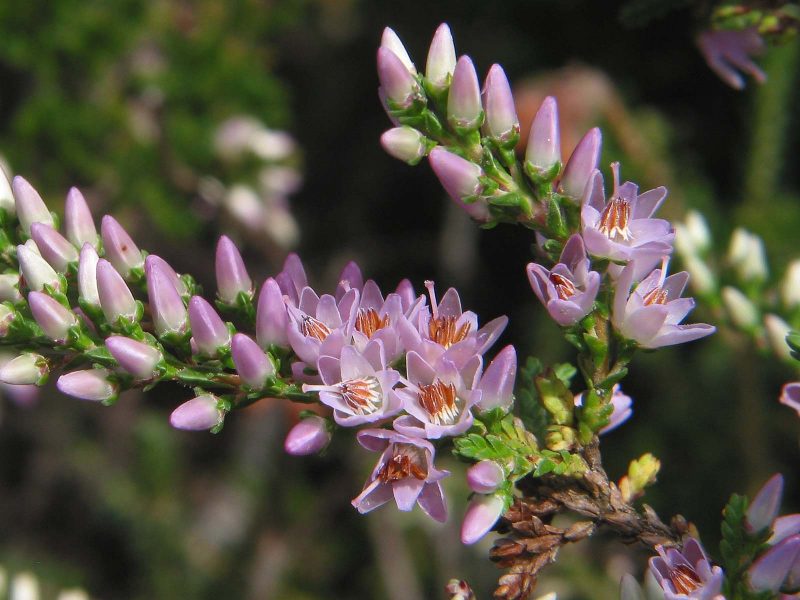
Before planting a crop in open ground, it is worth considering that heather painfully transfers a transplant due to the superficial root system. A similar procedure should be avoided.
Protection against diseases and pests
Heather is resistant to harmful insects.

However, diseases caused by the development of fungi can be affected:
- Gray rot - if the plot has fairly dense soil due to stagnation of moisture, the shoots can become covered with a coating that indicates the development of the disease. As a protective measure, plantings with copper-containing fungicides should be treated. With intensive development, it is recommended to repeat the treatment twice more with an interval of 7-9 days.
- Rust - the appearance of red-brown spots on the shoots of the crop is a sign of rust, which fungicidal preparations will also help to cope with.
- Powdery mildew - at the beginning of the drying out of young shoots that were previously covered with a whitish loose coating, you should immediately resort to spraying with the same pesticides.
How to breed heather
The heather plant is propagated by seeds, as well as cuttings, layering and division of the bush.
Seed way
The most time consuming process. However, due to the excellent germination of the seed, many gardeners stop on it.
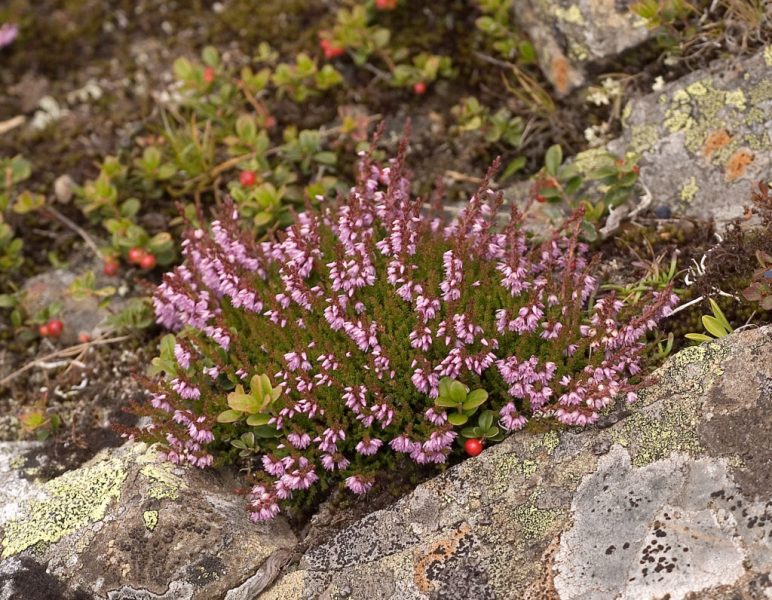
Main steps:
- Seed is distributed over a moistened nutrient substrate and slightly pressed.
- The container is covered with glass and placed in a bright place.
- When seedlings appear, the glass is systematically removed for ventilation, moisturizing and tempering seedlings.
- When the seedlings get stronger, they dive into separate containers in which they grow for 2 years, after which they can be planted in open ground.
Cuttings
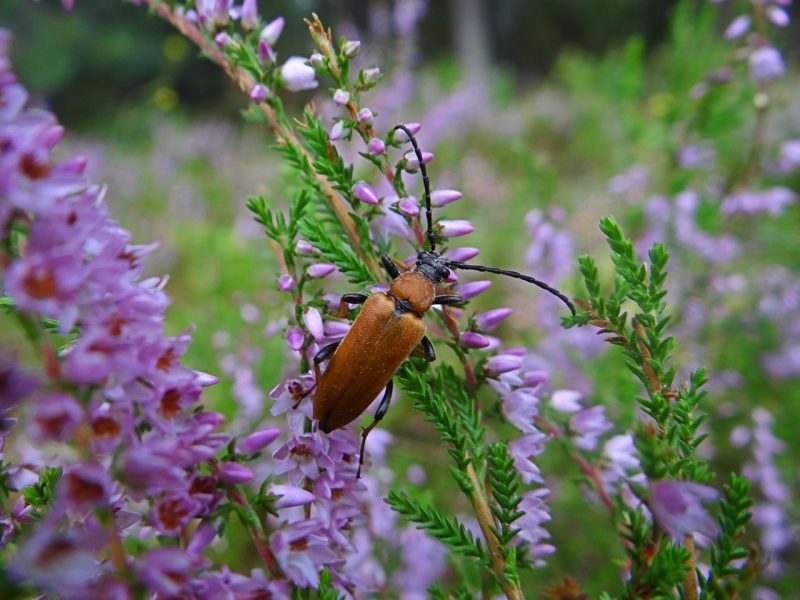
The procedure is performed at the end of the summer season when:
- Cuttings are cut from non-flowering, strong shoots, which are buried in separate containers filled with a substrate of sand and peat.
- Cuttings are rooted under caps.
- Capacities with rooted cuttings for the winter are placed in a room with a temperature regime of 16-18 ° C.
- In the spring, planting material is planted in open ground.
Propagation by layering
The easiest way in which developed shoots are selected near the ground and pinned into grooves, where they are sprinkled with peat. Rooted cuttings are detached next spring.
Bush division
If there is a large, overgrown bush on the site, then at the end of summer you can remove it and divide it into parts. Each split with roots and young shoots is planted in prepared landing holes.
Therapeutic properties, briefly
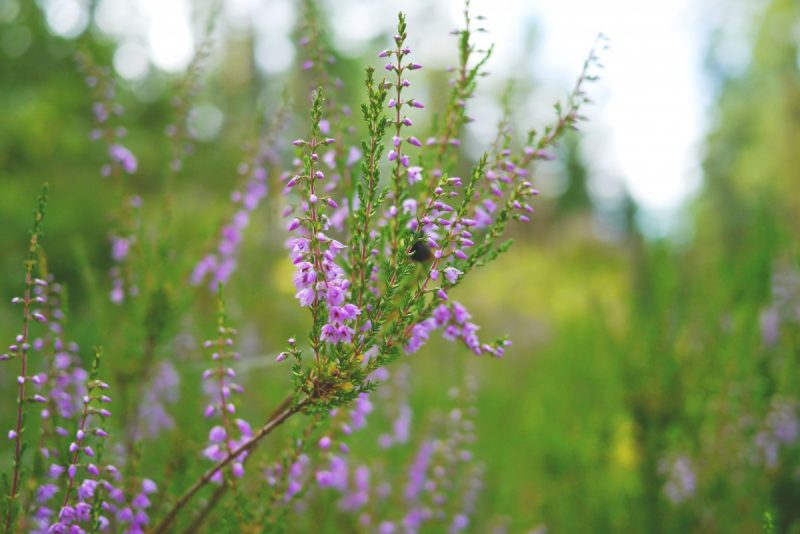
Heather is used not only in landscape design, widely used in folk and even traditional medicine due to such healing qualities as:
- soothing;
- antibacterial;
- expectorant, healing;
- causing drowsiness;
- sweat and diuretic.
Thus, after planting heather, an ordinary gardener will become the owner of a home pharmacy that is located in an undemanding and evergreen flower with expressive inflorescences.












